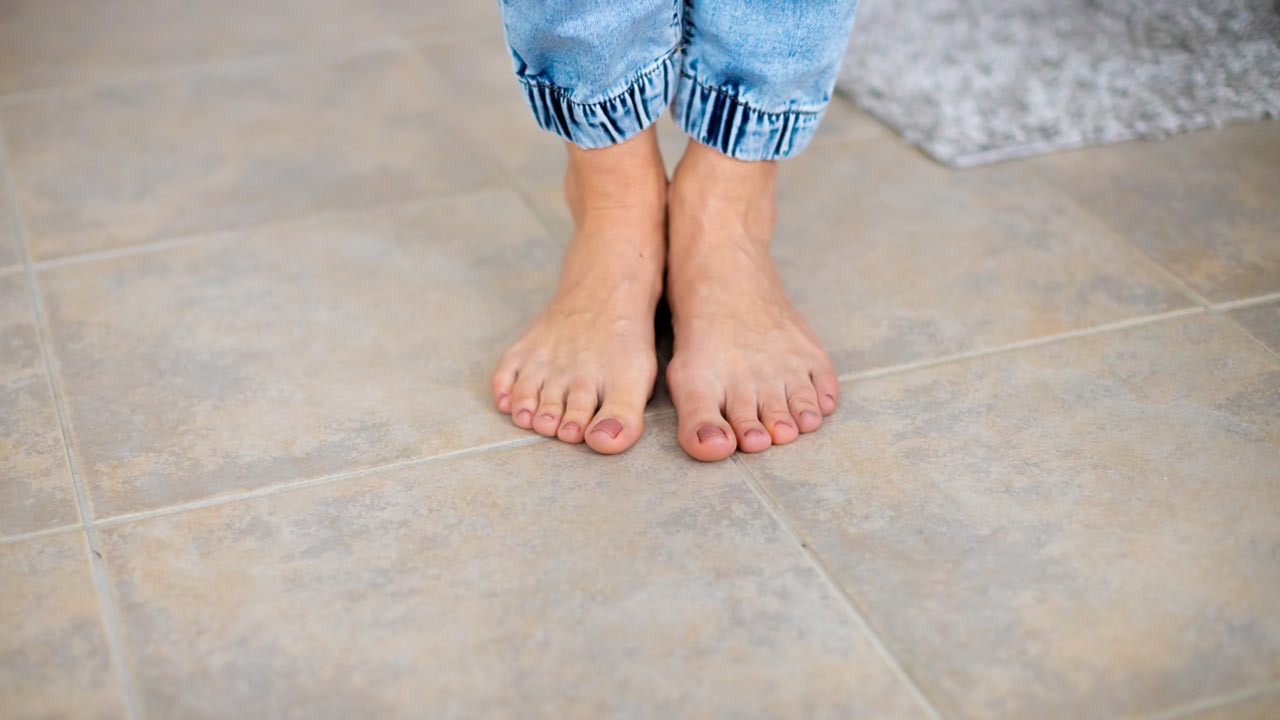
Recognizing and dealing with plantar fasciitis
You are the resident power hitter on your Sunday rec. league softball team. You’ve smacked the ball just over the outstretched glove of the centre-fielder. As you round second base, you notice a sharp pain at the bottom of your foot near your heel. You dismiss it as a minor, short-term injury that will pass after a good night’s rest, but fast-forward a few weeks later and the pain doesn’t seem to be going away. If any of this sounds familiar, you may be experiencing plantar fasciitis.
What is plantar fasciitis?
Plantar fasciitis (also known as jogger’s heel) is one of the most common causes of heel pain.
The plantar fascia is the flat bed of tissue (ligament) connecting the heel bone to the toes and supports the arch of the foot. If the plantar fascia is strained, it gets weak, swollen and inflamed. This causes the heel or bottom of the foot to hurt when standing or walking.
What are its signs and symptoms?
Plantar fasciitis is characterized by sharp stabbing pain in the bottom of the foot near the heel. The pain worsens by bearing weight after long periods of rest. Individuals with plantar fasciitis often report their symptoms are most intense during their first steps after getting out of bed or after long periods of sitting.
Factors that increase risk of plantar fasciitis:
- Age. Plantar fasciitis is most common between the ages of 40 and 60.
- Certain types of exercise. Activities placing a lot of stress on the heel and attached tissue – such as long distance running, ballet and aerobics – can contribute to an earlier onset of plantar fasciitis.
- Faulty foot mechanics. Being flat-footed, having a high arch or abnormal pattern of walking can adversely affect the way weight is distributed when standing.
- Excess weight. Being overweight puts extra stress on the plantar fascia.
- Occupations that involve a lot of standing. Factory workers, teachers and others who spend most of their work hours walking or standing on hard surfaces can damage their plantar fascia.
Ignoring plantar fasciitis may result in chronic heel pain, and in some cases if the plantar fascia continues to be overused, it can rupture. Typical signs and symptoms of plantar fascia rupture include a clicking or snapping sound, significant local swelling and acute pain in the sole of the foot.
How do I know I have plantar fasciitis?
Usually no tests are necessary to diagnose plantar fasciitis. The diagnosis is made based on history and physical examination. Your chiropractor, will check your feet and watch how you stand and walk. They will also ask questions about:
- Your past health, including illnesses or injuries
- Your symptoms, such as where the pain is and what time of day your foot hurts most
- How active you are and what types of activities you do.
How is it treated?
Plantar fasciitis often occurs because of injuries that happen over time. With treatment, pain will reduce in a few weeks, but it may take a few months to a year for it to resolve completely.
Start by giving your feet a rest. Cut back on activities that make your foot hurt and try not to walk or run on hard surfaces. Stretching and strengthening exercises or use of specialized devices can also provide symptom relief and speed up recovery time.
How can chiropractic help?
- Exercises. Your chiropractor can instruct you in a series of exercises to stretch the plantar fascia and Achilles tendon, and strengthen lower leg muscles to help stabilize the ankle and heel.
- Athletic tape. Your chiropractor may recommend the use of an athletic tape to support the bottom of your foot.
- Night splints. Your chiropractor may also recommend wearing a splint that stretches your calf and the arch of your foot while you sleep. This holds the plantar fascia and Achilles tendon in a lengthened position overnight and facilitates stretching.
- Orthotics. Your chiropractor may prescribe arch supports or orthotics to help distribute pressure to your feet more evenly.
If you are experiencing heel pain and suspect you have plantar fasciitis, see your chiropractor. The sooner you seek treatment, the sooner your feet can stop hurting. Chiropractors are experts in the diagnosis and treatment of conditions of the musculoskeletal system (the body’s bones, muscles, cartilage, tendons, joints and connective tissue).
Find a chiropractor here

